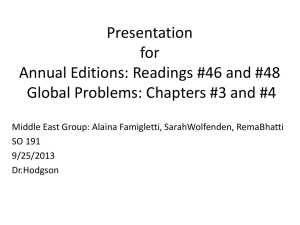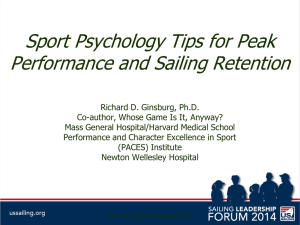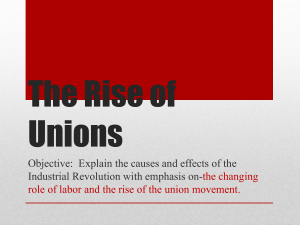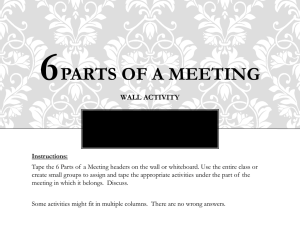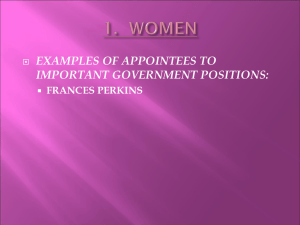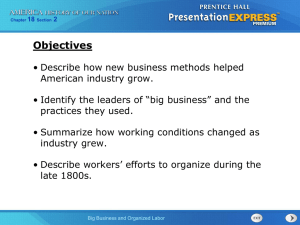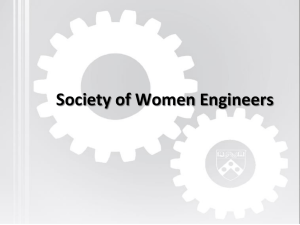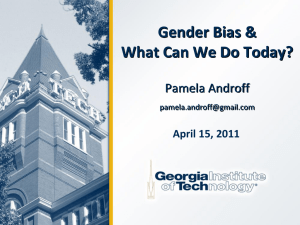Women(2)
advertisement
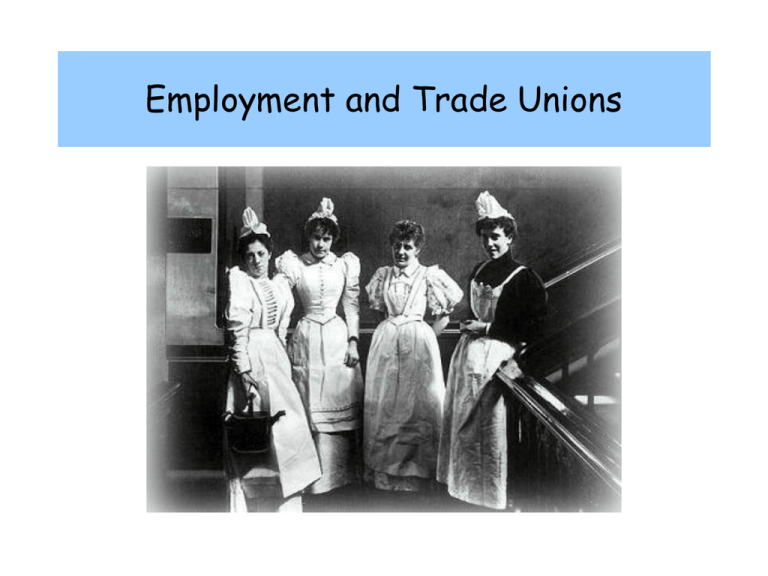
Employment and Trade Unions Employment and Trade Unions • 1851 3 million women employed - 42% of workforce • 80% of women workers in domestic service, clothing trades and textile industry • They ‘lived in’, worked long hours for poor pay • Earned half a mans salary for doing the same job • http://www.ourwardfamily.com/victorian_servants.htm Employment and Trade Unions Technology led to 97% of women in office work Women however had to give up their job when they were married Telegraph Exchange 1871 Employment and Trade Unions • Women worked through the TU’s to improve their conditions • Although numbers did not increase until after 1870s due to opposition from men • Men believed they were entitled to the higher wage as they were the ‘bread winner’ Employment and Trade Unions • Increase membership from 21,085 in 1877 to 437,000 in 1914 • Why? • Strong membership in Lancashire cotton unions but excluded from general TU’s until mid century • 1875 attended the TUC Trade Unions • 1893 first women factory inspector • Although TUs failed to make an impact on domestic service were 1.5 million were working • However by outbreak of war women had achieved improvements but still lagged behind Activity • Describe the main cause, the events and the outcome of the Match Girls’ strike in 1889 • In what ways could the strike and its outcome be described as ‘a landmark victory for women’s rights? Lack of education • Little chance of education for working class women • Role was either in the factory or at home • They were to be content and behave themselves! Middle class • Most were educated by a governess who taught them how to read, knit, sew play the piano and paint • The girls were educated to be good wives and mothers • male educationalists believed that the stress of education could damage the health of a young girl instead they needed rest Change in education • 1848 Queens college in London was founded as a training college for women teachers, • set new standards of education in girls schools Taunton Commission in 1868 • Set up to enquire into the education of boys, included girls schools at last minute due to Emily Davis • Found a deficiency in girls education, solely on domestic duties and ‘accomplishments’ • Some good schools e.g. academic schools such as Cheltenham Ladies college founded by early feminist pioneers. • However in the minority Debate over the nature of reform • 1st school of thought: make education for girls as good as but different from boys • 2nd school of thought: girl’s education should be identical to boys • All agreed an increase in number of good schools for girls Emily Davis • Campaigned to gain women the right to university • Opened a school for women in 1869 later known as Girton college • Followed by Newnham Hall by Jemima Clough Summary • Oxford University and 4 in Scotland enrolled women in 1879 • By turn of century more middle class women going into higher education and into professions • By end of Victorian era there is no doubt that the causes of women’s rights had made significant progress but they still had no voting rights


